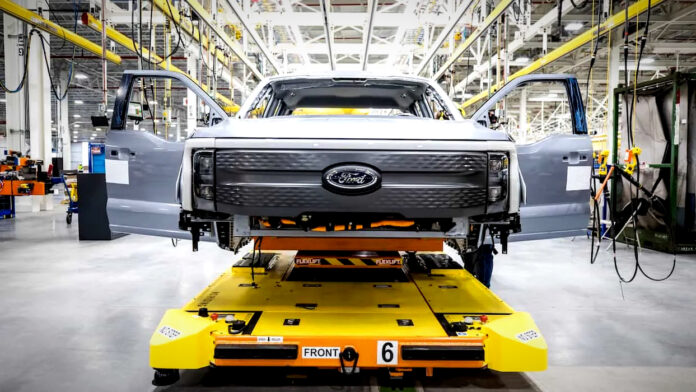Siemens has introduced a new on-prem software-based Industry 4.0 ‘workstation’ to replace all the traditional hardware paraphernalia that has built up in factories to control and automate machines and processes, including physical programmable logic controllers (PLCs), conventional human-machine interfaces (HMIs), and other edge devices. Ford Motor Company will be the first customer to deploy and scale the solution in its US plants, it said.
The new product is called Siemens Simatic Automation Workstation, and will be available in its Xcelerator digital business platform. It will be adapted to serve other industries and customers, beyond discrete manufacturing, the company said. Siemens declared it a “breakthrough in automation technology” which gives “unprecedented control over factory automation and security”. It stated: “This ushers in IT workflows to OT environments.”
It went further, to suggest it heralds a new era, where the Industry 4.0 market is “only limited by our imaginations.” The idea is that its edge-based Workstation solution – which works with its own “industrial edge tech” for “high data throughput [and] low latency” (presumably a reference to its established industrial Wi-Fi and fledgling private 5G products) – usurps multiple individually-programmable hardware control pieces, mainly PLCs.
Instead, its pitch is that factories can deploy a single orchestration engine for Industry 4.0 automation, and bring control over an “expanded” (and expanding) variety of modular applications. “This applies not only to traditional automation tasks like motion control, sequencing, and safety, but it becomes the platform for future, novel automation tasks that incorporate industrial AI-in-the-control-loop, such as visual inspection and robotic grasping and placing.”
It explained: “PLCs are often referred to as the brains behind factories, energy grids, office buildings, and trains. Hundreds, even thousands, of these boxes can be found throughout plants. Each one requires extensive programming to keep it current, secure, and aligned with the other PLCs in the environment. [But the] Simatic Workstation can be viewed and managed from a central point.
“Since programming, updates and patches can be deployed to the entire fleet in parallel, the shop floor remains in sync. One example of the value this brings occurs when a facility needs to ramp up or down quickly in response to fluctuating demand. The manufacturer is no longer tied to boxes on the floor and can quickly deploy programming adapted to the current demand scenario.”
The announcement came at Automate 2024 in Chicago this week, billed as North America’s largest robotics and automation event. Ford Motor Company is to deploy Simatic Workstation across a “number of [its] manufacturing facilities”, the event heard.
Del Costy, president of Siemens Digital Industries in the US, said: “In times of volatility in demand and supply, manufacturers can no longer be tied to boxes on the floor that need to be individually – and manually – updated. Centralised management is the best option for increasing visibility and security for manufacturers [with] a high number of automation control points. This makes automation highly scalable and changes the game for how factories [are] managed.”

